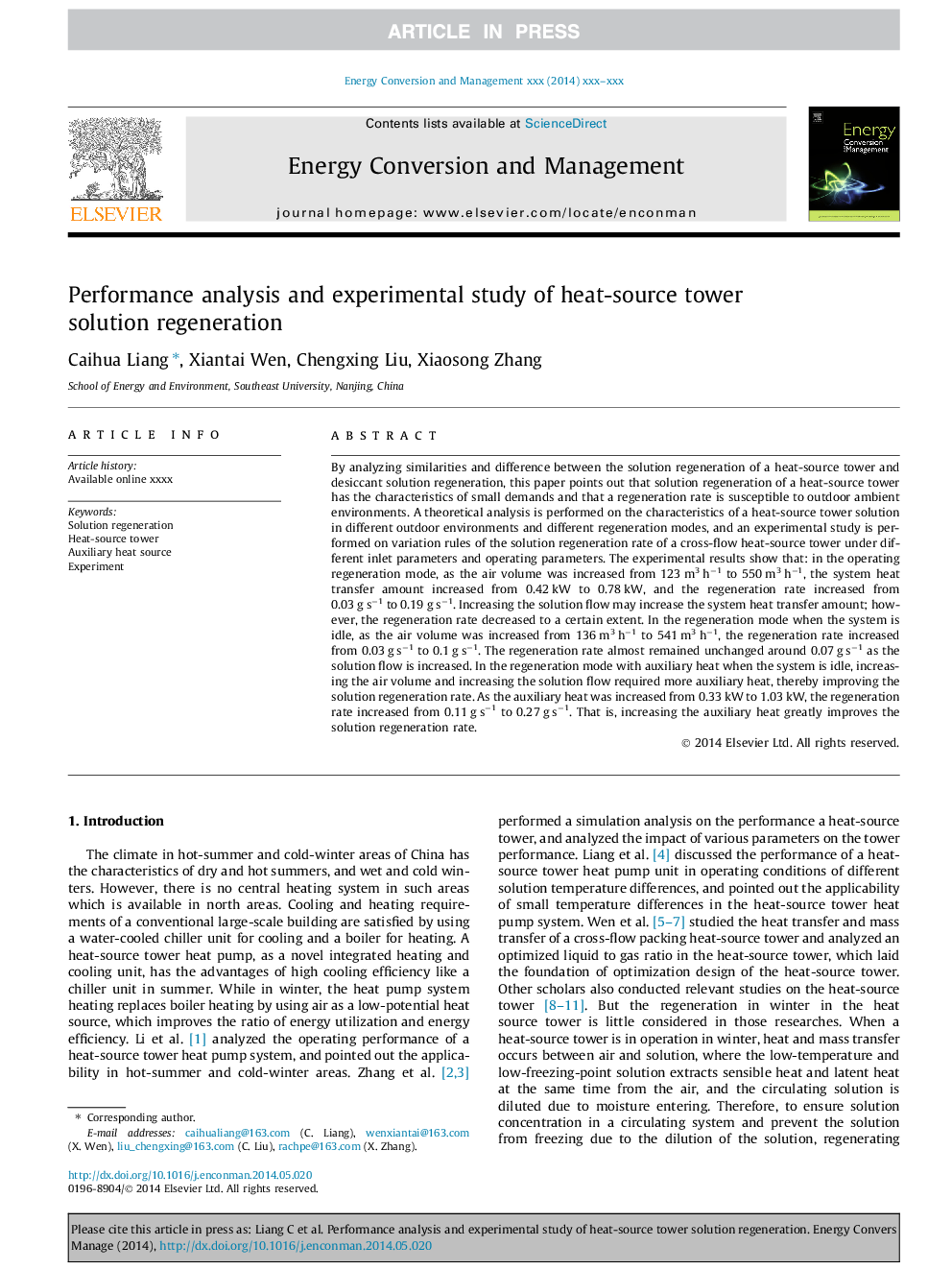| کد مقاله | کد نشریه | سال انتشار | مقاله انگلیسی | نسخه تمام متن |
|---|---|---|---|---|
| 7164572 | 1462877 | 2014 | 7 صفحه PDF | دانلود رایگان |
عنوان انگلیسی مقاله ISI
Performance analysis and experimental study of heat-source tower solution regeneration
ترجمه فارسی عنوان
تجزیه و تحلیل عملکرد و مطالعه تجربی از بازسازی محلول برج گرما منبع
دانلود مقاله + سفارش ترجمه
دانلود مقاله ISI انگلیسی
رایگان برای ایرانیان
کلمات کلیدی
بازسازی محلول، برج منبع حرارت، منبع حرارت کمکی، آزمایشی
موضوعات مرتبط
مهندسی و علوم پایه
مهندسی انرژی
انرژی (عمومی)
چکیده انگلیسی
By analyzing similarities and difference between the solution regeneration of a heat-source tower and desiccant solution regeneration, this paper points out that solution regeneration of a heat-source tower has the characteristics of small demands and that a regeneration rate is susceptible to outdoor ambient environments. A theoretical analysis is performed on the characteristics of a heat-source tower solution in different outdoor environments and different regeneration modes, and an experimental study is performed on variation rules of the solution regeneration rate of a cross-flow heat-source tower under different inlet parameters and operating parameters. The experimental results show that: in the operating regeneration mode, as the air volume was increased from 123 m3 hâ1 to 550 m3 hâ1, the system heat transfer amount increased from 0.42 kW to 0.78 kW, and the regeneration rate increased from 0.03 g sâ1 to 0.19 g sâ1. Increasing the solution flow may increase the system heat transfer amount; however, the regeneration rate decreased to a certain extent. In the regeneration mode when the system is idle, as the air volume was increased from 136 m3 hâ1 to 541 m3 hâ1, the regeneration rate increased from 0.03 g sâ1 to 0.1 g sâ1. The regeneration rate almost remained unchanged around 0.07 g sâ1 as the solution flow is increased. In the regeneration mode with auxiliary heat when the system is idle, increasing the air volume and increasing the solution flow required more auxiliary heat, thereby improving the solution regeneration rate. As the auxiliary heat was increased from 0.33 kW to 1.03 kW, the regeneration rate increased from 0.11 g sâ1 to 0.27 g sâ1. That is, increasing the auxiliary heat greatly improves the solution regeneration rate.
ناشر
Database: Elsevier - ScienceDirect (ساینس دایرکت)
Journal: Energy Conversion and Management - Volume 85, September 2014, Pages 596-602
Journal: Energy Conversion and Management - Volume 85, September 2014, Pages 596-602
نویسندگان
Caihua Liang, Xiantai Wen, Chengxing Liu, Xiaosong Zhang,
